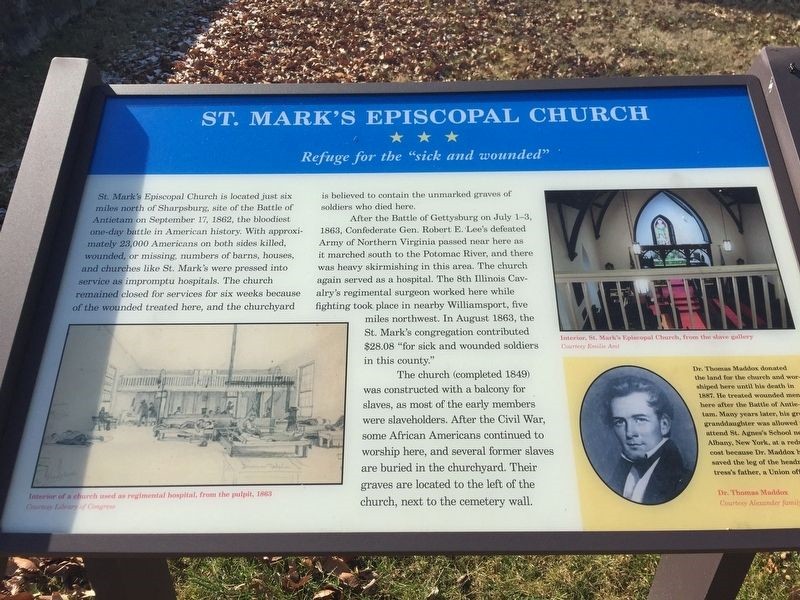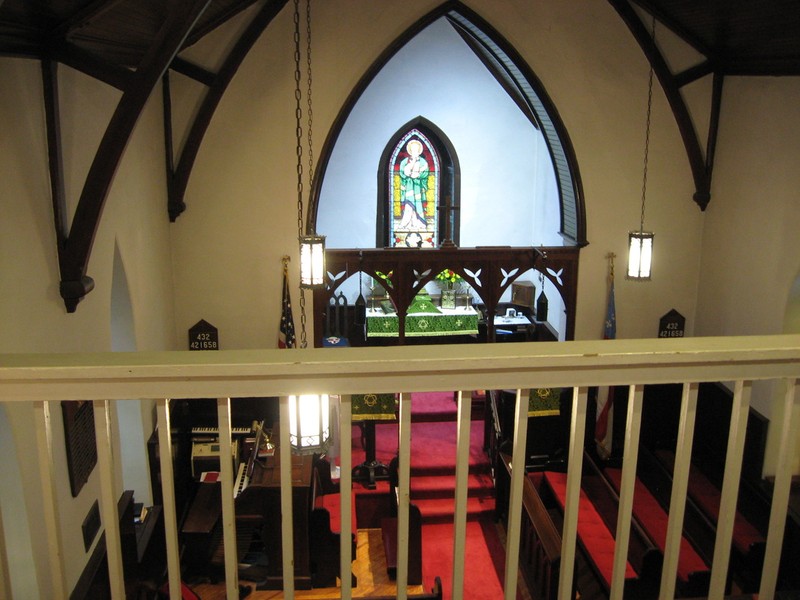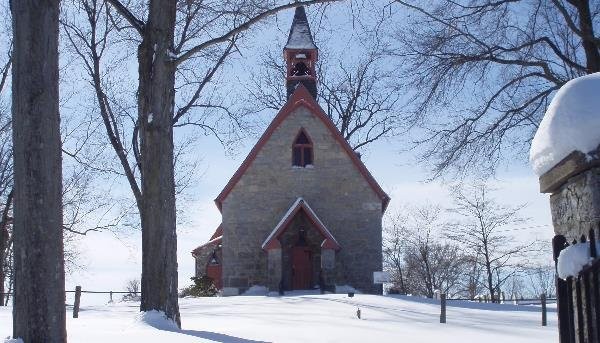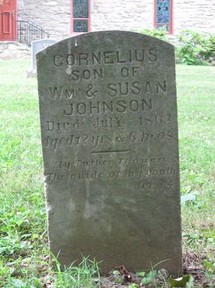St. Mark's Episcopal Church
Introduction
Text-to-speech Audio
Images
St. Mark's Episcopal Church Marker which tells how the Church served as a hospital during the Civil War

The interior of St. Mark's Church as seen today from the slave balcony. The Slave Balcony was added to the original plans and cost an additional $50.

St. Mark's Episcopal Church was completed in 1849

1863 gravestone of Cornelius Johnson, probably a slave, in the St. Mark's Episcopal Church cemetery

Backstory and Context
Text-to-speech Audio
In 1850 the eight founding members of the church-owned 53 slaves and records indicate that at least 32 slaves attended the church. The slaves sat in the balcony where they could easily see and hear the sermon but they were separated from white members. The first recorded marriage in the church involved two slaves, Jeremiah and Malinda James, who were owned by one of the members. In addition, out of the first four baptisms performed in the spring and summer of 1849, two of those baptized were slaves and one was a free person of color. It is unclear how many other free persons of color attended the church.
St. Mark’s Episcopal Church first served as a field hospital after the Battle of Antietam which occurred six miles away from the church on September 17, 1862. Approximately 23,000 soldiers were killed, wounded, or missing making it the bloodiest one-day battle in American history. The church acted as a hospital for six weeks after the battle.
After the Civil War, some of the freed slaves continued to attend the church. One of those former slaves was Letty Ann Hopewell who had attended with her owner until she and her husband escaped after hearing rumors that their owner was going to sell one of their daughters. After the Civil War, the family returned to Maryland and began attending St. Mark’s again. Letty and her husband are both buried in St. Mark Cemetery.
Like all antebellum churches, St. Mark’s Episcopal has changed over the past 150 years and includes a diverse congregation. The congregation has grown and added additional buildings to the grounds but conitinues to hold services in the historical church sanctuary that once segregated its members.
Sources
1. Amt, Emilie. History: African Americans at St. Mark's before the Civil War. Saint Mark's Episcopal Church Lappans. http://stmarkslappans.org/african-american-history-of-st-marks.html
2. Glahn, William. St. Mark's Episcopal Church: Refuge for the “sick and wounded”. Historical Markers Database. May 13, 2017. https://www.hmdb.org/marker.asp?marker=103404
